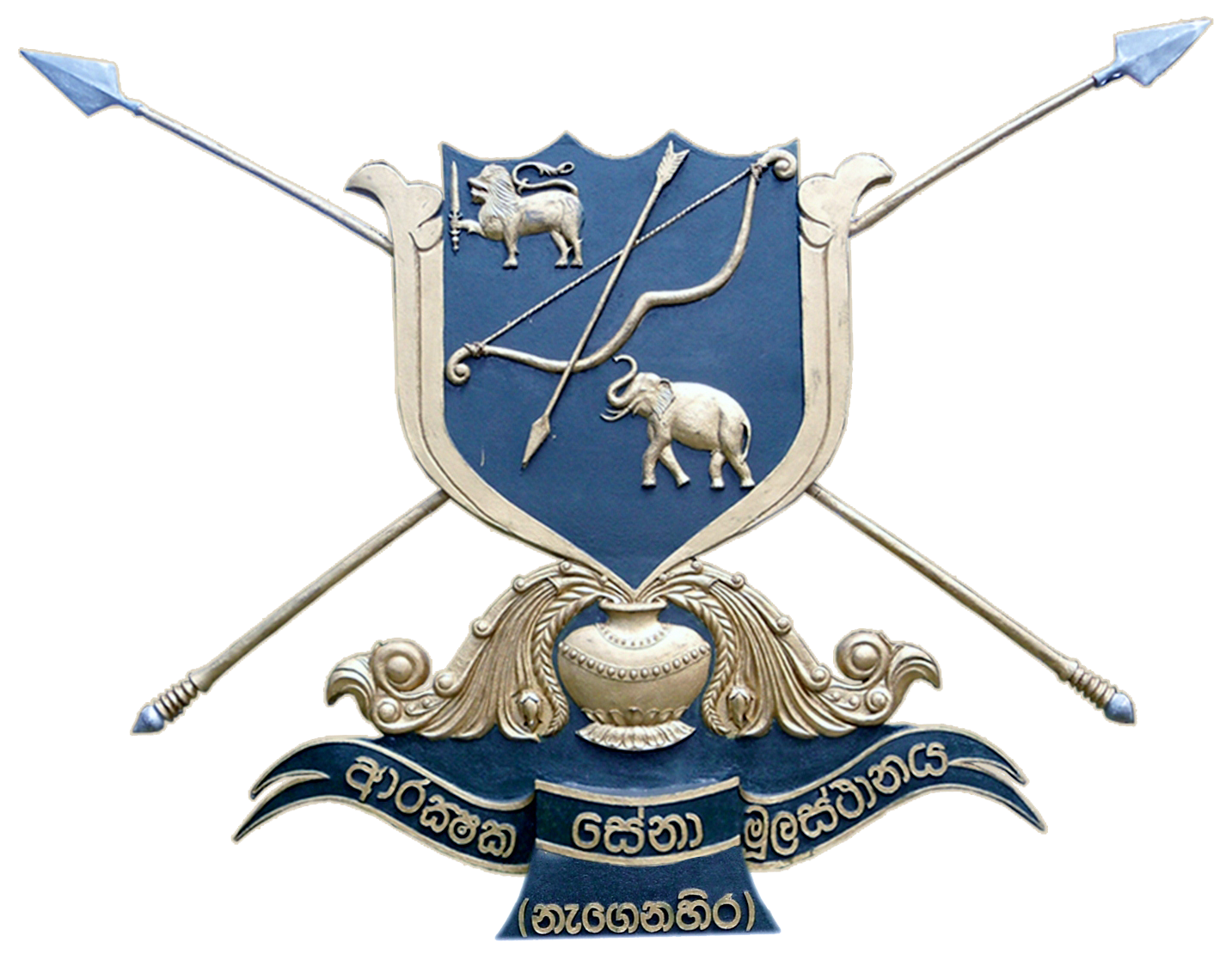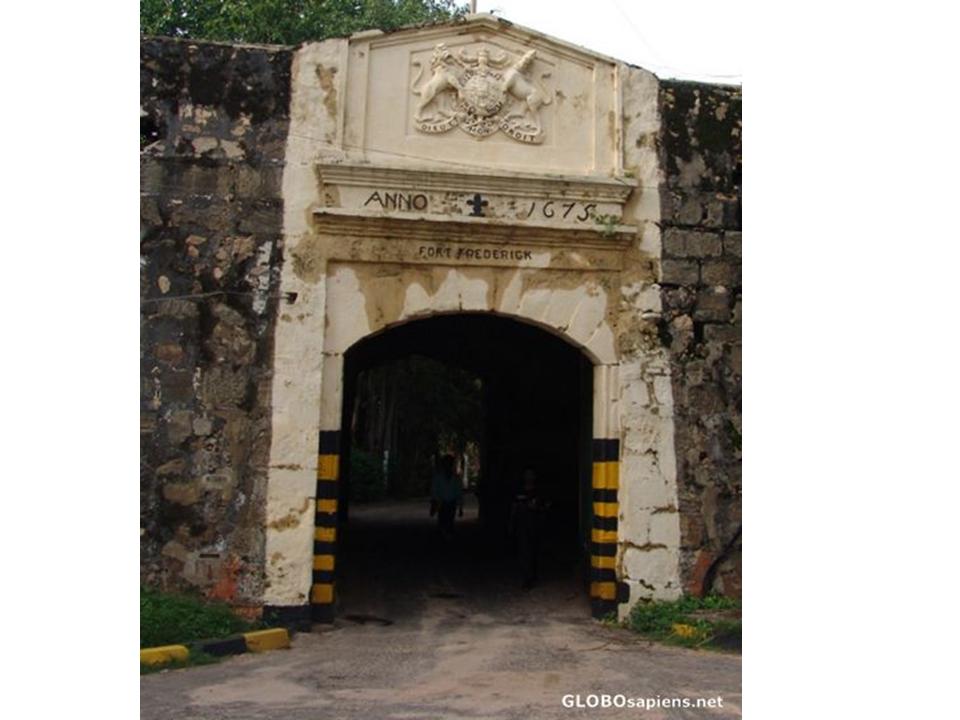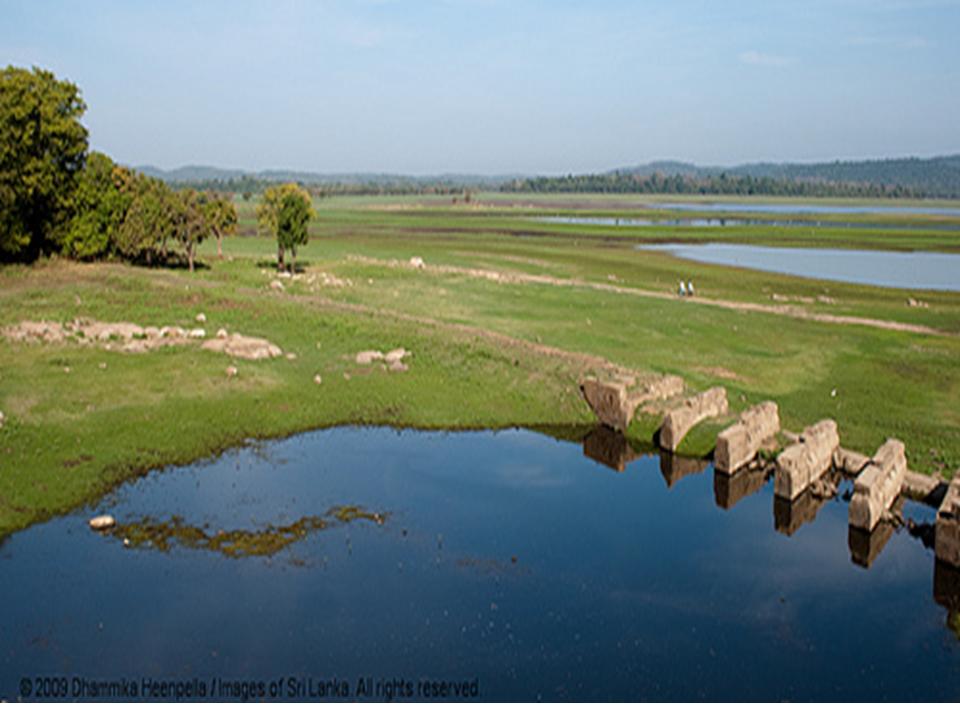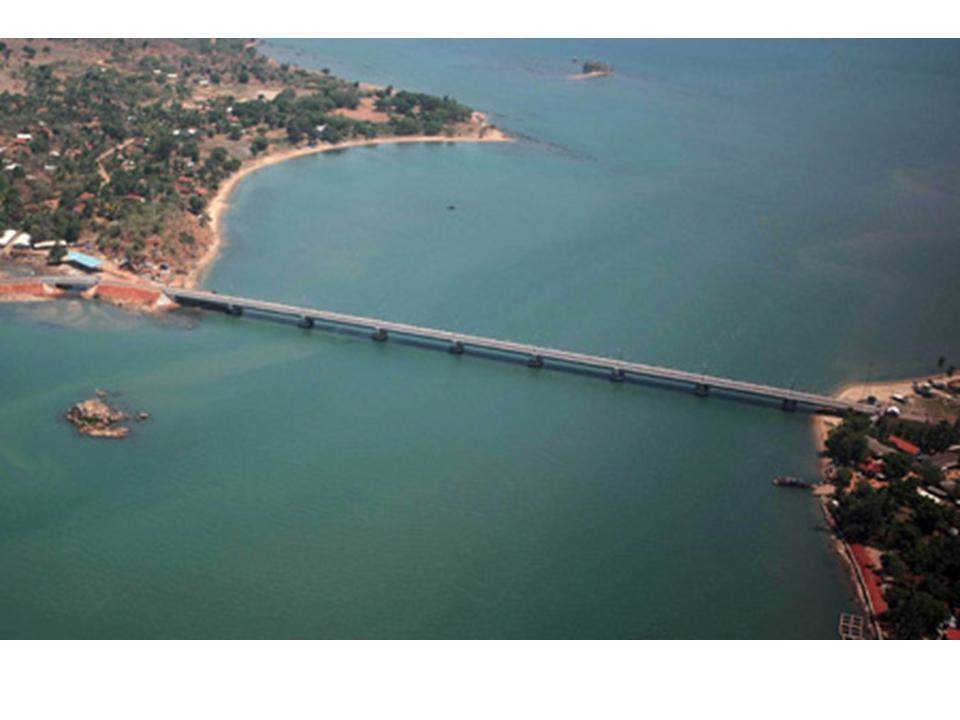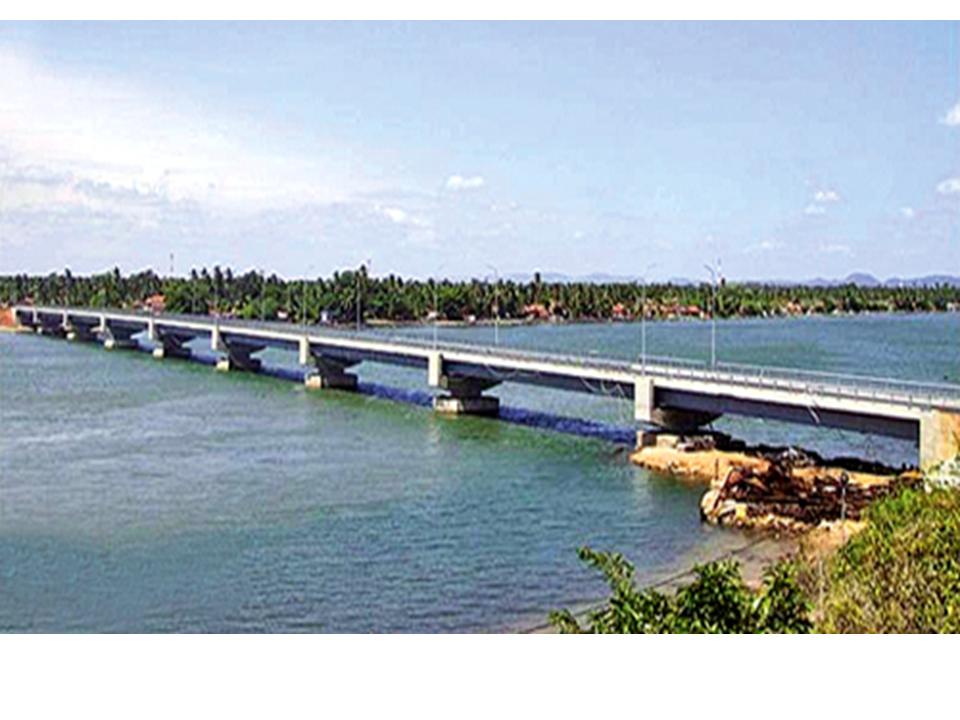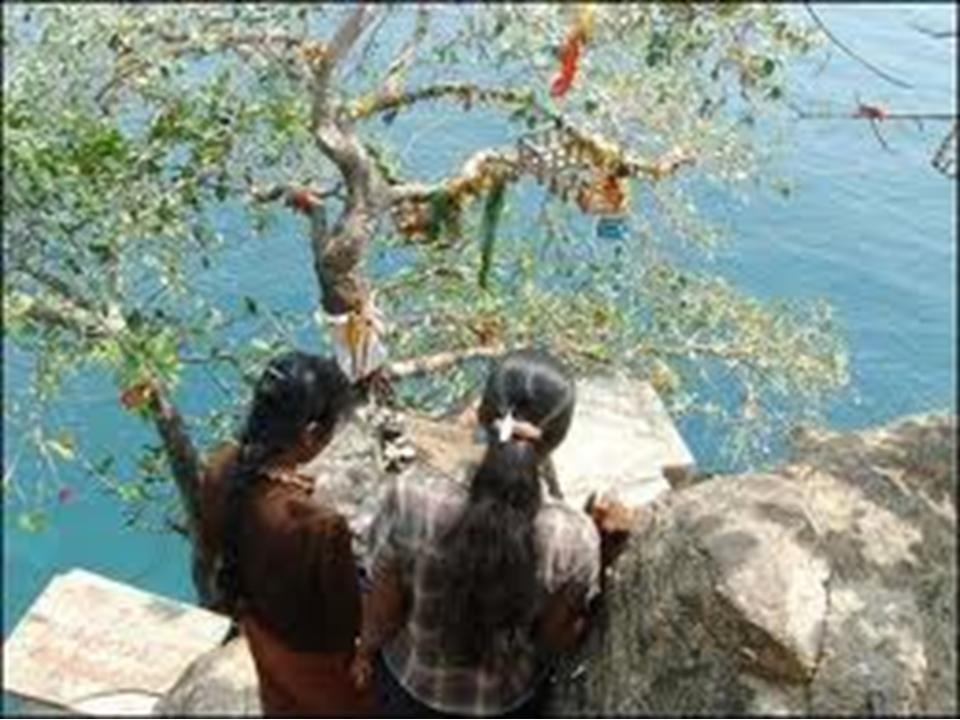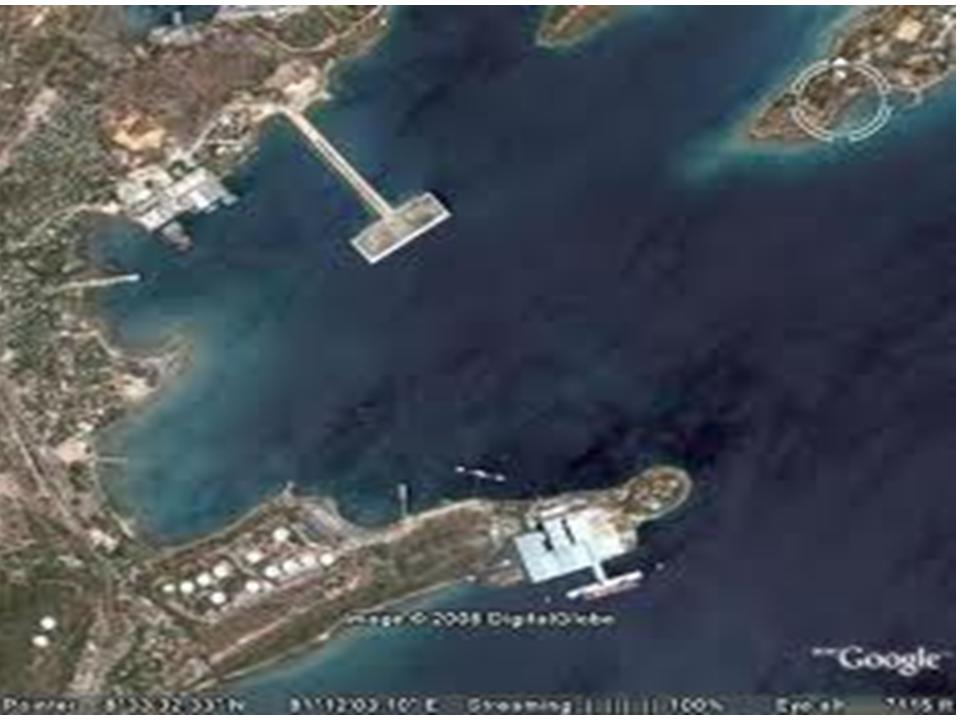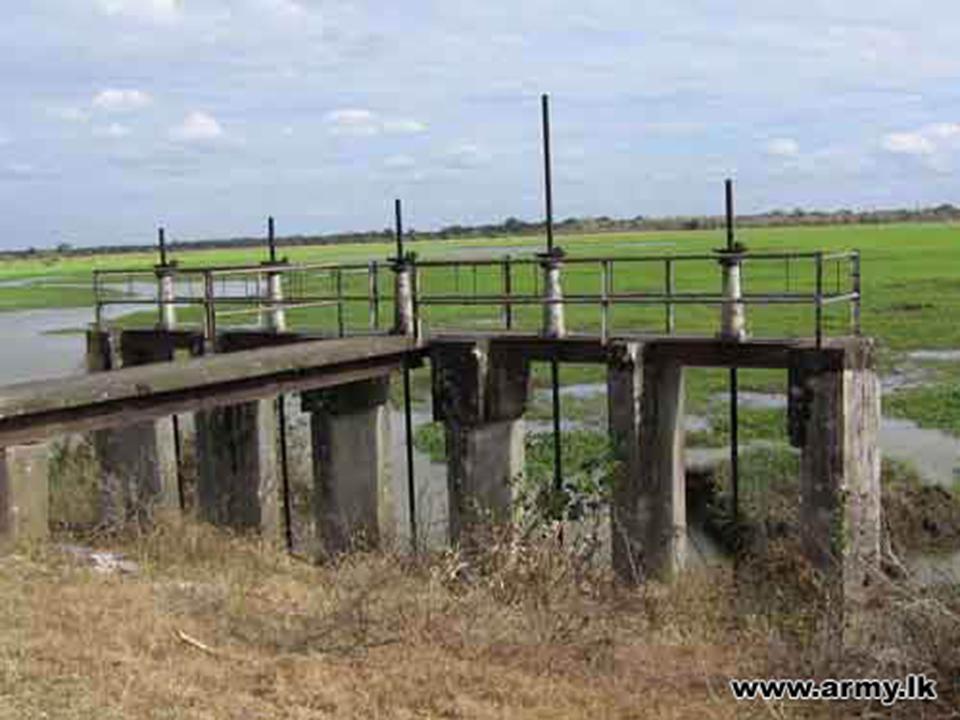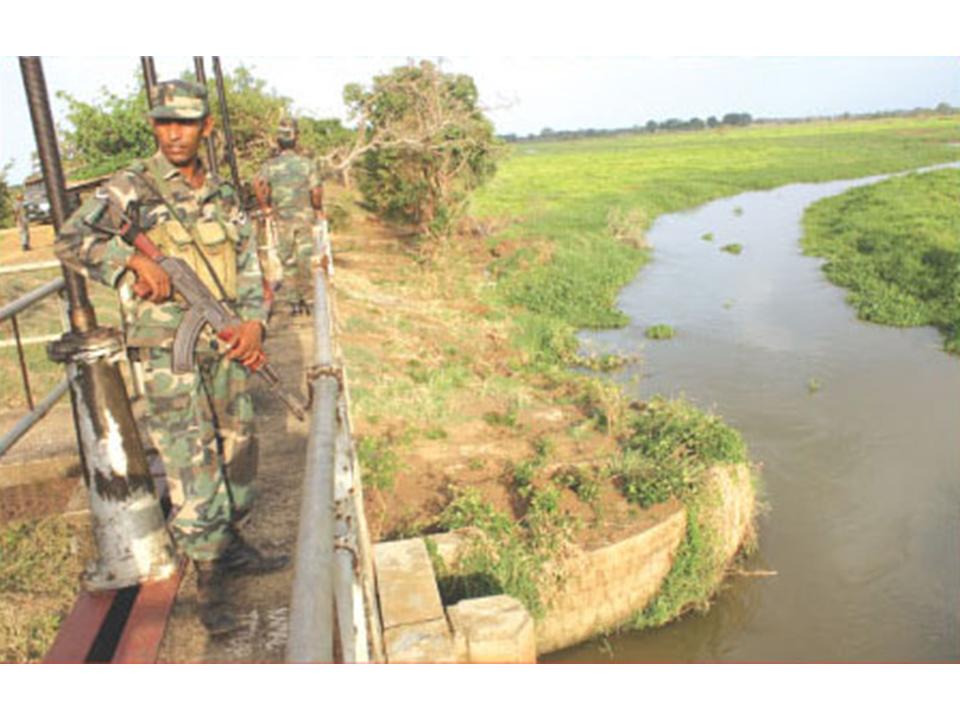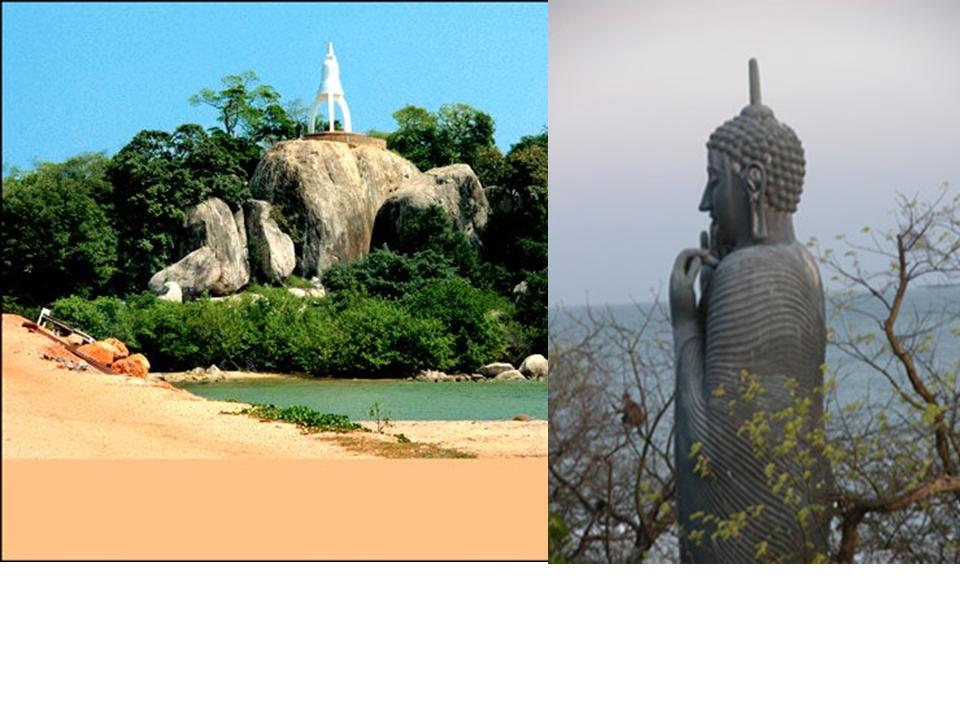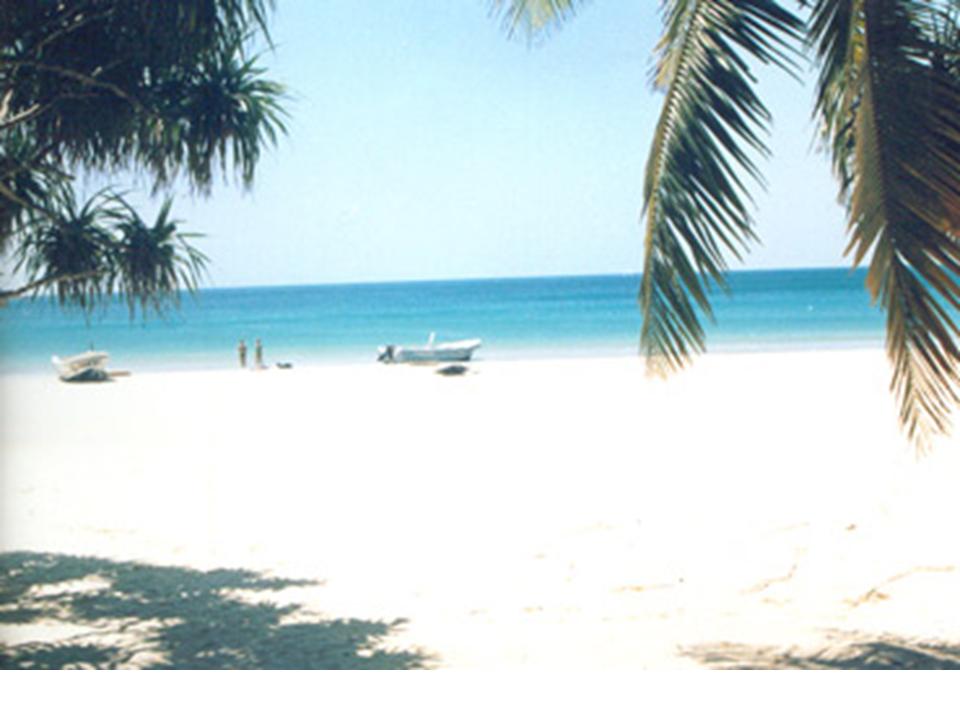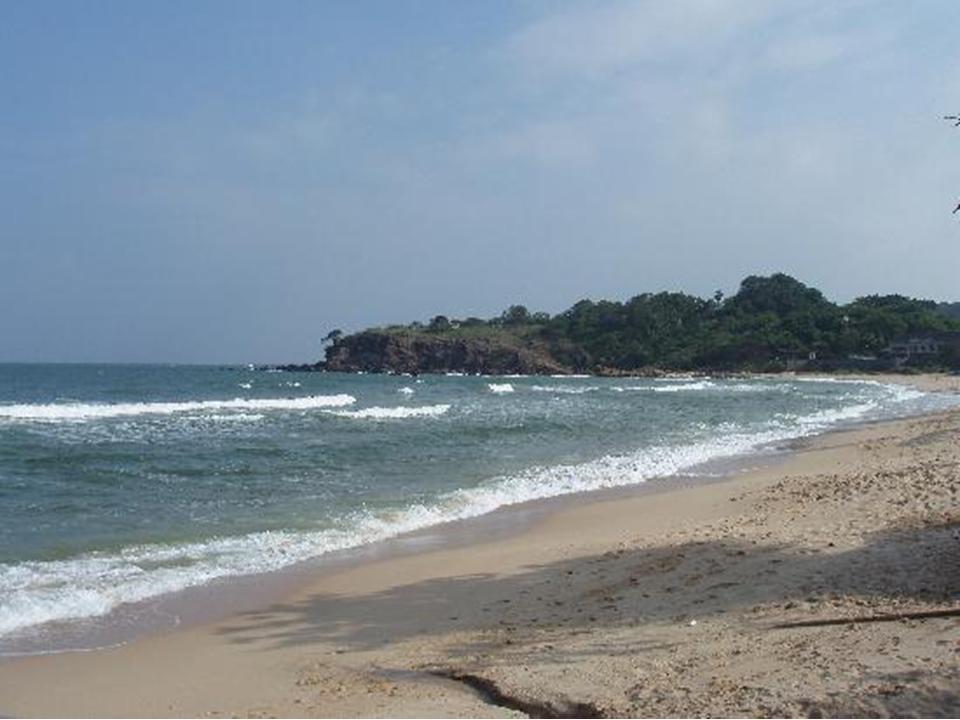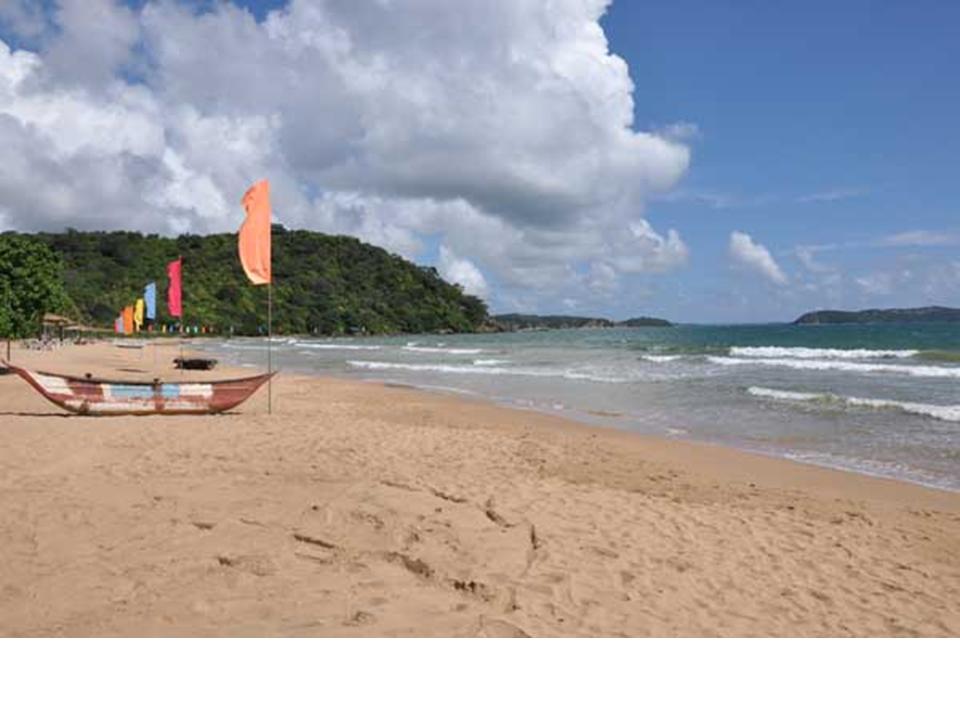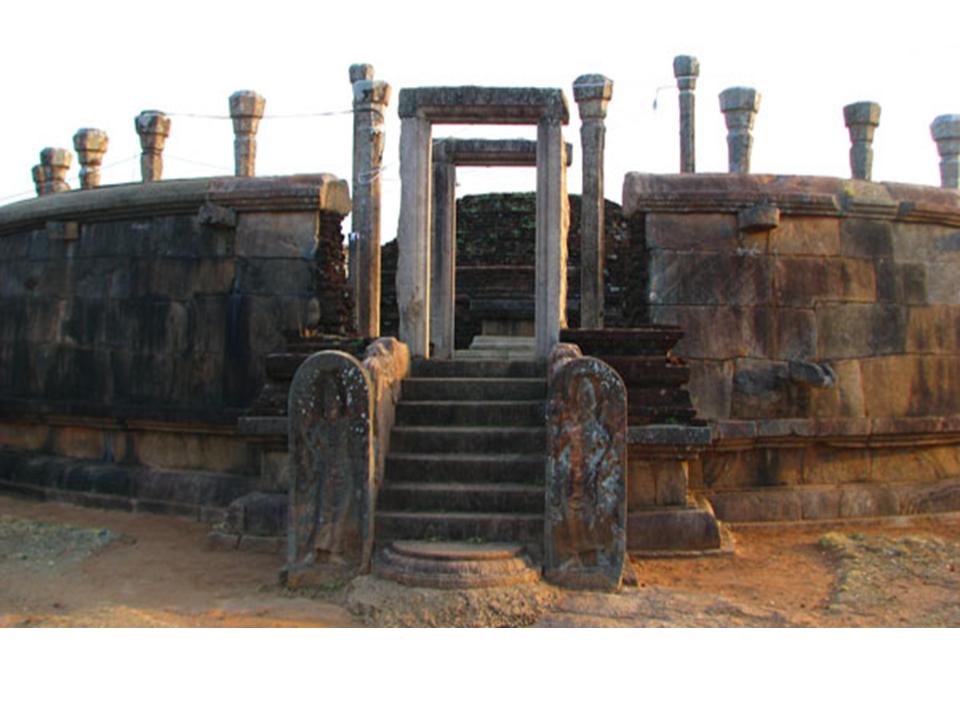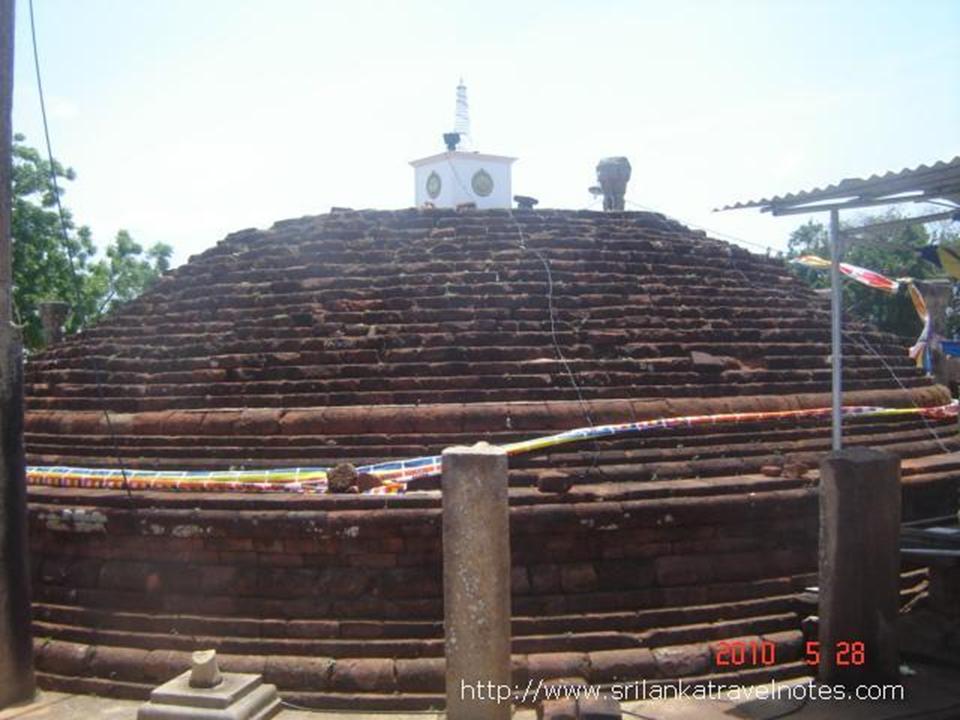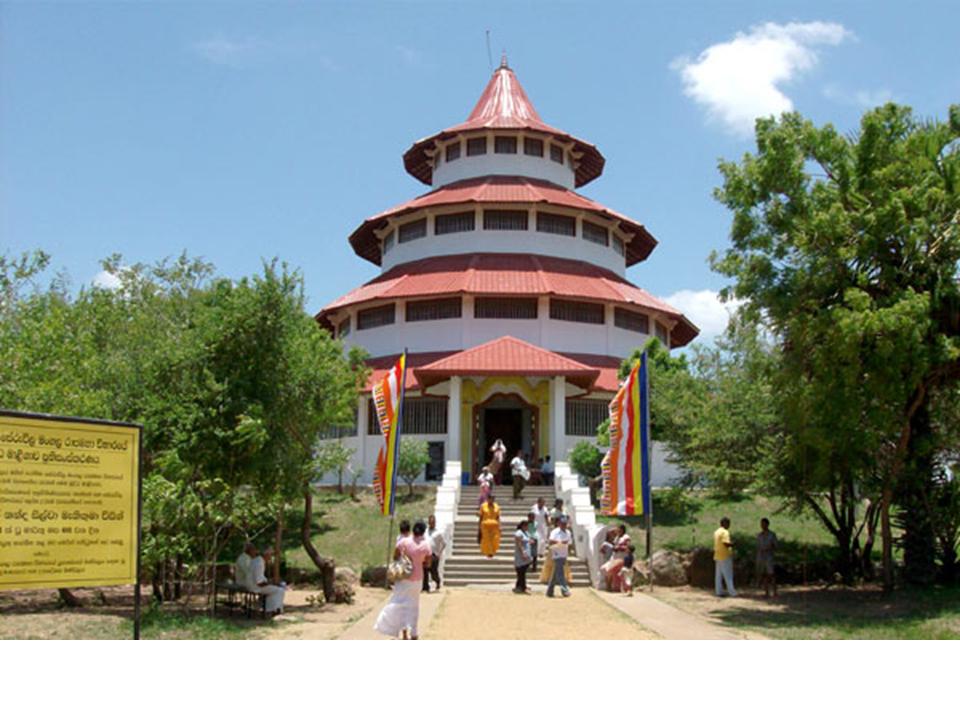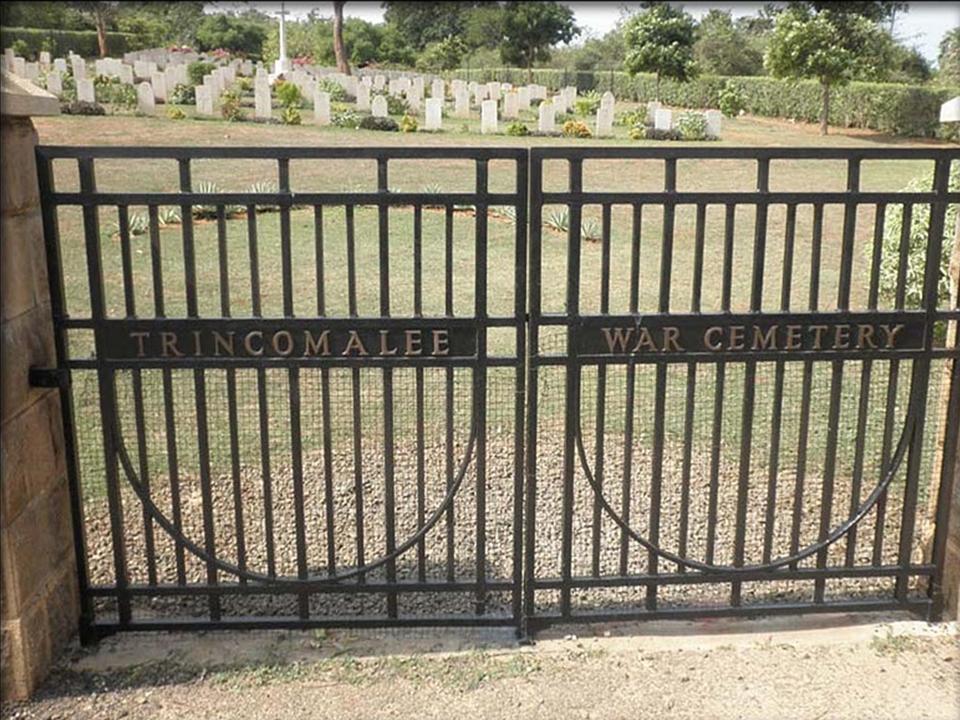FORT FREDRICK - TRINCOMALEE
Fort Fredrick is a fort built by Portuguese at Trincomalee, Sri Lanka in 1624. It was built from the debris of the ancient Hindu temple -Koneswaram temple (Temple of a Thousand Pillars) that was destroyed by the Portuguese. This was captured by a Dutch fleet under Admiral Westerwold in 1639. Not until 1665 was a new fort built here by the Dutch defend against the advancements of the British and the French. In 1672, the year when the Dutch Republic was attacked by France, Britain, and two German states, the French captured Trincomalee and later they occupied Batticaloa. However soon the French were forced to leave. Trincomalee was important for its large all-season secure harbor. In late 18th century Trincomalee traded hands once more with the French capturing it again and later handing back to the Dutch East India Company (VOC) at the Peace of Paris in 1784. In 1795 it was taken over by the British, and remained a British garrison till 1948. Coastal artillery guns were added during the two World Wars. Today it remains garrisoned by a detachment of the Sri Lanka Army accessible to visitors. (Distance - 4 km from Trincomalee Town)
HOT SPRINGS
The region of Kanniya , Trincomalee, is popular among both local and foreign travelers alike for its seven hot springs. These hot water springs have been made in to seven wells which are full of water during most parts of the year. These wells each vary in the level of water temperature and are popular due to their legendary origins. Legend has it that Vishnu, the Lord of the Past and the Present, wanted to trick Ravana in to thinking that his mother Kannya had passed away. Believing what Vishnu said, Ravana frantically searched for a source of water to cleanse his mothers body and prepare it for its last rites. Immediately Vishnu is said to have disappeared from the site and created the hot springs at the location where he stood. (Distance - 6 km from Trincomalee Town)
KANTALE TANK
This ancient irrigation construction belongs to the Trincomalee District. According to the chronicles the tank, also named “Gangathala Vapi” was built by Aggabodhi the II (606-618) and rehabilitated and developed by King Parakramabahu the Great. (Distance - 40 km from Trincomalee Town)
KINNIYA BRIDGE
This new ferry bridge which spans 300 meters long will connect Kinniya to Trincomalee on the Batticaloa - Thirukkondiyadimadu Trincomalee Road. Dynamic Pile Testing was conducted on 1200mm diameter bored piles using a 5-ton drop hammer to test the load carrying capacity of the piles at off shore locations. The process employed specially designed equipment. (Distance - 17 km from Trincomalee Town)
KONESWARAM TEMPLE
Koneswaram temple is an important Hindu temple in Trincomalee, Eastern Province, Sri Lankavenerated by Saivites throughout the continent. The primary deity is the Hindu god Lord Shivain the form Konesar. At its zenith, Koneswaram was of considerable size and heralded as one of the richest and most visited temple complexes in Asia. Built atop Swami Rock, a rocky promontory overlooking the Trincomalee harbor, the temple has lay in ruins, been restored, renovated and enlarged by various royals and devotees throughout its history. Koneswaram is heralded as a grand seat of Shiva worship in the 6th-7th century CE Tamil hymn canon Tevaram. Its bronze idols from the 10th century CE reflect the high points ofChola art. The temple has been administered and frequented by Tamil Hindus and is located in Trincomalee, a classical period port town. (Distance - 1 km from Trincomalee Town)
TRINCOMALEE HARBOUR
He Trincomalee Harbour is a large natural harbour in Sri Lanka. Located in Trincomalee, Sri Lanka in the heart of the Indian Ocean, its strategic importance has shaped its recenthistory. There had been many sea battles to conquer the harbour. The Portuguese, Dutch, French, and the English, each held it in turn. The harbour, the fifth largest natural harbour in the world, is overlooked by terraced highlands, and its entrance is guarded by two headlands. (Distance - 7.3 km from Trincomalee Town)
MAVIL ARU ANICUT
Mavil Aru (Tamil - Mother River}) is a waterway in Sri Lanka that supplies water to some regions of eastern Sri Lanka. The closure by the LTTE of the sluice-gates of Mavil Aru on July 26, 2006 was a crucial turning point in the Sri Lankan civil strife. With the initiation of 'Operation Watershed', the Sri Lankan Armed Forces undertook to wipe out the LTTE.
According to Gen.Fonseka, it was the correct place to start off the military battle to destroy the LTTE - which was at the time considered to be one of the most powerful terrorist outfits in the world. The armed forces retaliated by launching air strikes with the aim of capturing the waterway and sluice-gates. On August 11, 2006 the Sri Lankan Armed Forces announced that they had gained full control of the sluice gates of the reservoir. The LTTE was annihilated on May 17, 2009 when the entire military leadership was surrounded and destroyed by the Sri Lankan Armed Forces. (Distance - 69.3 km from PolonnaruwaTown)
LANKAPATUNA VIHARAYA
Lankapatuna viharaya is located on a point and being surrounded by the sea and the lagoon. This beach is identified as one of the most beautiful beaches in eastern coast such as Nilaveli. How ever this place had been used by LTTE as their base for 30 years. The ancient pagoda & many of other ruins had been destroyed by them. The pagoda at Lankapatuna was built recently on the same base of the ancient one. The road from Lankapatuna to Thoppur was a gravel one built by the LTTE. Having heard the same, we decided to reach Muthur via Thoppur. That decision gave us the opportunity to visit to the black beach. Due to the presence of mineral sand, the sea shore was completely black. Like as Pulmudei, weight of the sand was extremely high.(Distance - 55 km from Trincomalee Town)
NILAVELI BEACH
He soft sands and the gentle breeze caresses your cheek as you tread softly on the golden sands of Nilaveli beach under the sunny sky. Yonder you will see the great Pigeon Island where a big flock of rock pigeons soar high with their graceful grey wings doing a sort of air dance. The beauty of Nilaveli is definitely like no other and after a long journey from he city, the fresh air and the serenity of the place will make you feel like you’ve come to heaven. Smack bang in the middle of the solitude is the Nilaveli Beach hotel which has been the first luxury hotel to make full use of the bounty that is known as Nilaveli. Speaking to us was the Resident Manager, Ravi Ramsay who said that the hotel has being doing well because of the fact that their efficient and loyal staff have made it so. Even though there have been certain incidents that have happened due to the conflict, they were savd because the people from the area protected it. He said, ‘We are lucky to have staff who treat their work place as a second home and have done immensely to safeguard it. Even during the devastation of the tsunami, we suffered greatly and it was only one of our hotel staff who brought us water from his own well to sustain us”. Today, he has been promoted as a supervisor and has been well-looked after for his services rendered.(Distance - 14.5 km from Trincomalee Town)
MARBLE BEACH
Unspoiled by man, it is a place where one can enjoy the scenic beauty of the eastern coast of Sri Lanka while basking in the history of this strategic town, boasting of one of the largest natural harbours in the world. Air Force Resort Marble Beach, located not very far from the newly built Kinniya Bridge, the longest bridge in Sri Lanka is built around Marble Beach, a virgin stretch of beach which has always been synonymous with Trincomalee. Air Force Resort Marble Beach has been designed to blend with its natural surroundings, leaving its natural beauty and tranquility intact so that its guests will be able to enjoy nature at its best while also enjoying all the amenities they need for their comfort. It will give you sense of communing in harmony with nature. Life guards around the clock will ensure your safety while you enjoy boat rides, sea baths and even snorkeling along the lovely coral reefs while. Beach Volley ball and Mountain Hiking will also be available for those who may be interested in drier pursuits
Air Force Resort Marble Beach boasts of 5 Cabanas – Ebony, Teak, Mahogany, Margosa and Satinwood. We also offer a two storied Cabana with three rooms named Tamarind. If you are looking for luxurious solitude, these Cabanas and villa will be perfect for you, offering you peace and tranquility, with only the sound of the waves splashing on the beach. (Distance - 15.4 km from Trincomalee Town)
GIRIHADU SEYA
Girihadu seya is considered as the first Dageba in Sri Lanka, done by Thapassue Balluka Merchants. This is located in Thiriyaya close to Trincomalee Pulmoddi road.Load Buddha spent 7 weeks ( sath Sathiya) after his enlightenment ( This is around 528 BC) and End of that period, the 50th day two brother merchants call "Thapassu Ballula" offered the first dana ( alms giving). After the Dana, they requested some thing to warship and received "Sacred Kesha Datu"(lock of hair relic) . Those merchants used to travel different parts in the region and came to Sri Lanka also. One day they stayed in this area and kept this relic container on top of a rock and went to the suburb area for the business. On their arrival they found that the container cannot be moved and decided to build a pagoda enshrining the hair relic. Now this is call Girihadu Seya. This place was abandoned for several centuries and restoration of this Pagoda was done 1950's.
The area was under LTTLE control in recent past and they have demolish almost all the new buildings done in last 50 years. Same time the temple monks were chased out. But the main Seya ( Pagoda) was escaped without any harm. They have demolished the main Shrine room and the Awasa geya, where bikkus live.Currently most of the historical temples in the eastern province under threat of the treasure hunters. Some treasure hunting attempts in Girihadu Seya area also reported. (Distance - 46 km from Trincomalee Town)
SERUWILA MANGALA VIHARAYA
The Seruwila Mangala Viharaya in Trincomalee district is considered one of the most venerable ancient Buddhist temples to be found in the Eastern province where once Buddhism flourished at its peak. According to historical annals King Kavantissa who ruled the Ruhuna built this temple 2231 years back by enshrining the forehead relic of Gautama Buddha. It is believed that three viharas existed at this particular spot built during the periods of three former Buddhas named Kakusanda, Konagama and Kasyapa with their relics enshrined and Gautama Buddha who was the last Buddha in this eon had personally visited this place and offered eight handfuls of 'Sapu' flowers. Gautama Buddha has not only foreseen that a king by the name of Kavantissa will build a temple with his forehead relic enshrined in it but has wished that this temple should be named 'Mangala' viharaya.
King Kavantissa, father of King Dutugemunu who ruled the Ruhunu Rata after having obtained the forehead relic of Buddha was searching for a suitable site to build a vihara. Being an ancient custom the king directed the royal elephant to lead the way and the King himself with workmen and soldiers followed. After travelling for many miles the party arrived at a place known as 'Varahasondi' in Sri Gonapura, a region in Rajarata and the elephant remained unmoved. Instantly work was started and within a short period a vihara was built with a Stupa enshrining the forehead relic. King Kavantissa also built several other Viharas in the area and thousands of Buddhists were settled down. Buddhism flourished in this area for several centuries. (Distance - 42 km from Trincomalee Town)
WAR CEMETERY
From the main A6 road, just south of the town of Trincomalee, turn left onto the North East Coast Road, also known as the Nilaveli Road. The cemetery is approximately 6 kilometres along this road on the right (eastern) side.
The cemetery was originally the Combined Services Cemetery, but was taken over by the Admiralty from the military authorities in April 1948 for use as a permanent naval cemetery. On the withdrawal of United Kingdom Forces from Ceylon it became the property of the Ceylon Government who have granted the Commission security of tenure in perpetuity. Save for a few post-war and non-war graves it is purely a war cemetery, and service war graves were transferred to it from Trincomalee (St. Mary) Churchyard; Trincomalee (St. Stephen's) Cemetery, Kottadi Cemetery, Jaffna; and Vavuiyna Combined Cemetery. A special memorial commemorates a naval man buried in Trincomalee (St. Stephen's) Cemetery whose grave could not be found. The non-war graves are those of men of the Merchant Navy whose death was not due to war service, and of civilians, of whom some were employees of the Admiralty; while the post-war graves were dependents of servicemen, civilian employees of the Admiralty and dependents of such employees. (Distance - 1.5 Km from Trincomalee Town)
